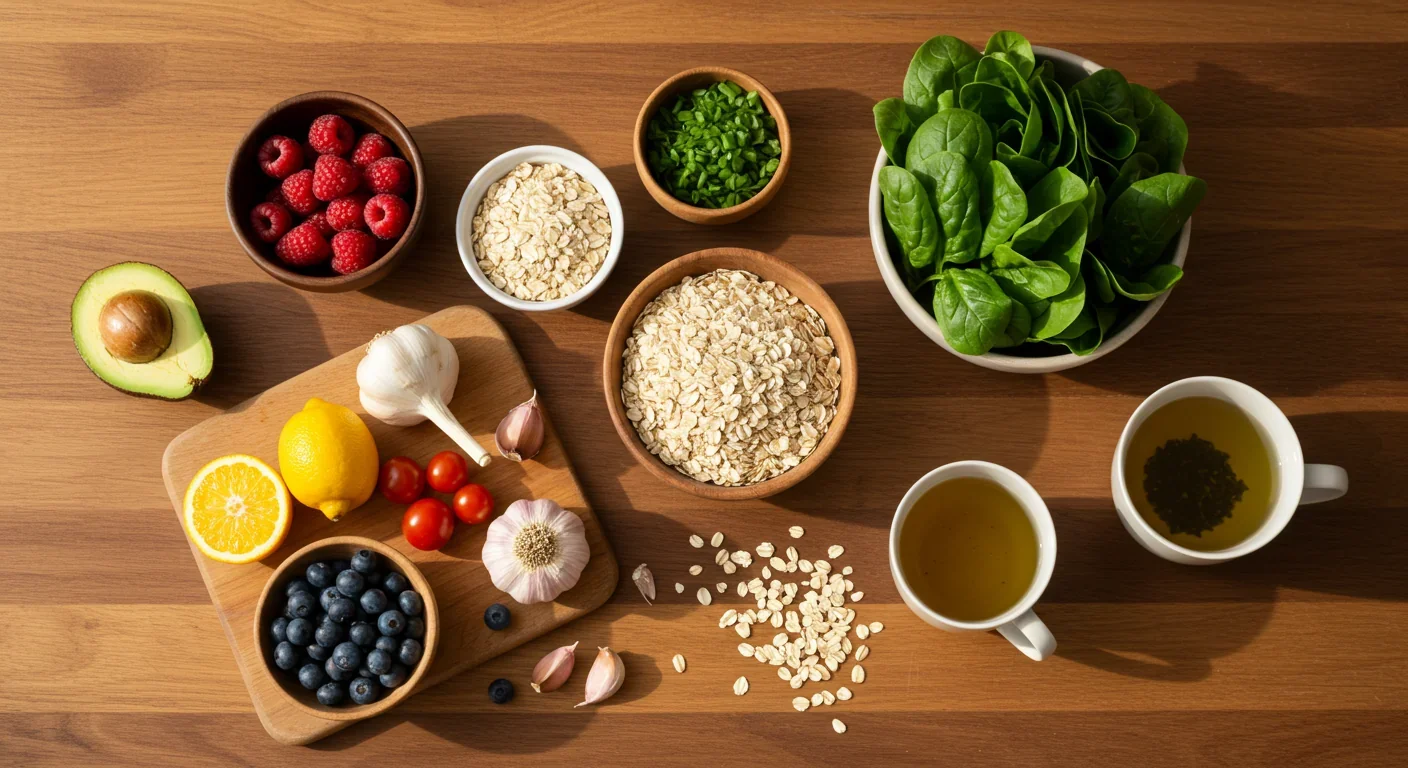Ultrafine Particles Breach Brain Barriers: Hidden Risk

TL;DR: A gut bacterium called Akkermansia muciniphila shows promise against metabolic syndrome by improving insulin sensitivity and reducing inflammation. You can boost it through polyphenol-rich foods, fiber, and intermittent fasting, or try new heat-killed probiotic supplements.

By 2030, experts predict that nearly half of all adults worldwide will be overweight or obese. As metabolic syndrome tightens its grip on global health, researchers have identified an unlikely ally living in your gut: a mucus-loving bacterium called Akkermansia muciniphila. Recent studies reveal that people with higher levels of this microbe show dramatically better insulin sensitivity, lower inflammation, and healthier cholesterol profiles. What started as a laboratory curiosity has become one of the most promising avenues for tackling the interconnected diseases of modern civilization.
In the early 2000s, microbiologist Muriel Derrien isolated an unusual bacterium from human intestinal mucus. This organism, later named Akkermansia muciniphila, thrives by feeding on the mucin layer that protects our gut lining. At first glance, a bug that literally eats your protective mucus layer sounds like bad news. But researchers soon discovered something counterintuitive: people with abundant Akkermansia populations tend to be leaner, healthier, and more metabolically robust than those with depleted levels.
The turning point came around 2013 when scientists documented a remarkable correlation: obese individuals and people with type 2 diabetes consistently harbor far fewer Akkermansia bacteria than their healthy counterparts. This wasn't just correlation. When researchers transplanted Akkermansia into obese mice, the animals lost weight, their blood sugar improved, and inflammation markers plummeted. Even more intriguing, they achieved these benefits without eating less.
Recent human trials have confirmed that supplementing with Akkermansia can improve metabolic markers in people with type 2 diabetes, though the effect depends heavily on how much of the bacterium you already have. If your gut is already rich in Akkermansia, adding more might not help. But if you're running low, boosting these bacteria could be transformative.
Akkermansia muciniphila comprises up to 5% of the gut microbiome in healthy adults, making it one of the most abundant species in our intestinal ecosystem. It occupies a unique ecological niche: the mucus layer that lines your intestinal walls. This thick, gel-like coating protects your gut from pathogens, toxins, and the daily assault of digestive enzymes.
Here's where it gets fascinating. When Akkermansia nibbles away at mucin, it forces your gut to constantly regenerate the mucus layer. This ongoing renewal process keeps the gut barrier tight and functional. A healthy barrier prevents bacterial toxins from leaking into your bloodstream, the condition known as "leaky gut" that triggers chronic inflammation.
But Akkermansia does more than just maintain the barrier. As it digests mucin, it produces short-chain fatty acids, particularly acetate and propionate. These molecules serve as fuel for your colon cells and send powerful anti-inflammatory signals throughout your body. They also appear to influence how your body handles glucose and stores fat, effects that ripple far beyond the gut itself.
The bacterium also produces a unique outer membrane protein called Amuc_1100 that directly interacts with immune cells in the gut wall. This protein appears to reduce inflammation, improve insulin signaling, and strengthen the intestinal barrier. Remarkably, even pasteurized (dead) Akkermansia cells retain this beneficial protein, which is why heat-killed supplements can still deliver health benefits.
The past five years have seen an explosion of research linking Akkermansia to metabolic health. A Mendelian randomization study examining genetic data from thousands of people found that higher natural levels of Akkermansia correlate with reduced risk of obesity and type 2 diabetes. This genetic approach helps rule out reverse causation: it's not just that healthy people happen to have more Akkermansia, but that having more Akkermansia appears to actively promote metabolic health.
In controlled human trials, pasteurized Akkermansia supplementation has shown promising results. Participants taking the supplement experienced improvements in insulin sensitivity, reductions in inflammatory markers, and modest decreases in body weight and hip circumference. The effects aren't dramatic, typically a few pounds of weight loss over several months, but they come without dietary restrictions or side effects.

What makes these findings particularly exciting is the consistency across different research groups and study designs. Whether scientists measure Akkermansia levels through genetic sequencing, culture techniques, or quantitative PCR, the pattern holds: more Akkermansia correlates with better metabolic health markers. Studies on metformin, the most prescribed diabetes drug worldwide, reveal that part of its effectiveness comes from boosting Akkermansia populations in the gut.
Animal studies have demonstrated even more striking effects. Mice supplemented with Akkermansia show improved glucose tolerance, reduced fat accumulation in the liver, and lower levels of inflammatory cytokines. Research on alternate-day fasting found that the practice alleviates neuroinflammation in diabetic mice partly by enriching Akkermansia populations and their metabolites.
You can't simply eat Akkermansia in yogurt like traditional probiotics. Until recently, this fastidious bacterium resisted cultivation outside specialized laboratories. But you can create conditions in your gut that help resident Akkermansia populations thrive.
The single most effective strategy is eating foods rich in polyphenols, plant compounds that Akkermansia loves. Cranberries stand out as particularly potent: studies show cranberry extracts significantly boost Akkermansia levels while improving cardiovascular risk markers. Pomegranates, grapes, green tea, dark chocolate, and berries all contain polyphenols that feed these beneficial bacteria.
Dietary fiber, especially the type found in whole grains, legumes, and vegetables, also supports Akkermansia growth. Prebiotics like inulin and fructooligosaccharides create a favorable environment. Foods particularly worth including: garlic, onions, asparagus, chicory root, Jerusalem artichokes, and flaxseeds.
Omega-3 fatty acids from fish, walnuts, and chia seeds appear to promote Akkermansia abundance. Some evidence suggests that kiwi fruit powder and specific strains of traditional probiotics can indirectly boost Akkermansia by creating a more hospitable gut environment.
Intermittent fasting has emerged as another powerful lever. Multiple studies show that time-restricted eating patterns increase Akkermansia populations and amplify the metabolic benefits of calorie restriction. The mechanism seems to involve changes in mucus production and gut transit time that favor Akkermansia over other species.
Conversely, certain dietary patterns suppress Akkermansia. High-fat Western diets, excessive artificial sweeteners, and regular antibiotic use all deplete these beneficial bacteria. Chronic stress and sedentary behavior also correlate with lower Akkermansia levels, suggesting that lifestyle factors beyond diet matter.
The most exciting development is the emergence of Akkermansia as a next-generation probiotic available in supplement form. European regulatory authorities have approved pasteurized Akkermansia muciniphila for commercial use, and several companies now offer standardized supplements.
These products differ from traditional probiotics in a crucial way: they contain heat-killed bacteria rather than live cultures. This might sound counterproductive, but remember that Akkermansia's beneficial effects come partly from its outer membrane proteins, which remain intact even after pasteurization. Dead cells can't colonize your gut long-term, but they still deliver therapeutic molecules that reduce inflammation and strengthen the gut barrier.
Current research is exploring more ambitious applications. Scientists are investigating whether Akkermansia can enhance cancer immunotherapy, reduce cardiovascular disease risk, and even protect against neurodegenerative conditions. Studies on mice suggest that Akkermansia metabolites can cross the blood-brain barrier and influence neuroinflammation, opening possibilities for treating Alzheimer's and Parkinson's diseases.

Biotech companies are developing genetically modified strains designed to produce higher levels of beneficial compounds. Others are engineering harmless bacteria to display Akkermansia's therapeutic proteins, potentially offering similar benefits without the need to cultivate this oxygen-sensitive microbe at industrial scale.
One particularly promising avenue involves combining Akkermansia with other interventions. Research shows that Akkermansia supplementation potentiates the effects of medications like metformin and GLP-1 agonists. This synergy could allow lower drug doses with fewer side effects while achieving better metabolic control.
Despite the enthusiasm, important questions remain unanswered. We still don't fully understand why Akkermansia levels vary so dramatically between individuals. Genetics plays a role, but diet, medication history, and early-life microbial exposures all contribute to the complex ecology that determines whether Akkermansia thrives or struggles in your gut.
The European Food Safety Authority has evaluated pasteurized Akkermansia supplements and concluded they're safe for most people. However, long-term safety data remains limited. We know that short-term supplementation over several months doesn't cause serious adverse effects, but what about years of use? Could chronically elevated Akkermansia levels have unintended consequences?
There's also the personalization problem. As recent studies demonstrate, Akkermansia supplementation helps people with low baseline levels but may do nothing for those who already have healthy populations. Without testing, you can't know whether you'd benefit from supplementation or dietary strategies to boost this bacterium.
The field also grapples with measuring what matters. Fecal testing can estimate Akkermansia abundance, but this measurement captures bacteria in your colon, not the mucus layer where Akkermansia actually functions. We need better biomarkers that reflect Akkermansia activity and health impact, not just abundance.
Finally, remember that Akkermansia is one player in an ecosystem of hundreds of bacterial species. Focusing obsessively on a single microbe while neglecting overall gut health would be like optimizing one instrument in an orchestra while ignoring the others. The most robust metabolic benefits come from a diverse, balanced microbiome, where Akkermansia plays its part alongside other beneficial species.
The science on Akkermansia muciniphila has advanced rapidly from laboratory curiosity to clinical application. For people struggling with metabolic syndrome, obesity, or type 2 diabetes, this bacterium represents a legitimate therapeutic target backed by solid evidence.
If you want to support your Akkermansia populations, focus on the strategies with the strongest evidence base. Eat more polyphenol-rich foods, particularly berries, pomegranates, and cranberries. Include plenty of diverse fiber sources. Consider time-restricted eating patterns. These interventions carry minimal risk and provide benefits beyond Akkermansia alone.
Commercially available Akkermansia supplements represent a newer option with promising but still-developing evidence. They appear safe for most people and may offer benefits, particularly if your natural levels are low. However, they're not magic bullets. Think of them as one tool in a comprehensive approach to metabolic health that includes diet, exercise, stress management, and appropriate medical care.
The real revolution isn't Akkermansia itself but what it represents: a shift toward viewing metabolic disease through a microbial lens. For decades, we've treated obesity and diabetes as problems of willpower or genetics. The microbiome perspective adds a third factor, showing how the trillions of bacteria in your gut actively regulate metabolism, inflammation, and nutrient absorption.
As research progresses, expect increasingly personalized microbiome interventions. Testing technologies will improve, allowing doctors to assess your Akkermansia status and other key microbial markers. Treatments will become more targeted, using specific prebiotics, probiotics, or dietary strategies tailored to your individual microbial profile.
Within the next decade, manipulating Akkermansia populations might become standard care for metabolic disease, right alongside medications and lifestyle modification. The bacterium that eats your mucus could become one of your most valuable allies in staying healthy as you age. That's a future worth preparing for, one polyphenol-rich meal at a time.

MOND proposes gravity changes at low accelerations, explaining galaxy rotation without dark matter. While it predicts thousands of galaxies correctly, it struggles with clusters and cosmology, keeping the dark matter debate alive.

Ultrafine pollution particles smaller than 100 nanometers can bypass the blood-brain barrier through the olfactory nerve and bloodstream, depositing in brain tissue where they trigger neuroinflammation linked to dementia and neurological disorders, yet remain completely unregulated by current air quality standards.

CAES stores excess renewable energy by compressing air in underground caverns, then releases it through turbines during peak demand. New advanced adiabatic systems achieve 70%+ efficiency, making this decades-old technology suddenly competitive for long-duration grid storage.

Our brains are hardwired to see patterns in randomness, causing the gambler's fallacy—the mistaken belief that past random events influence future probabilities. This cognitive bias costs people millions in casinos, investments, and daily decisions.

Forests operate as synchronized living systems with molecular clocks that coordinate metabolism from individual cells to entire ecosystems, creating rhythmic patterns that affect global carbon cycles and climate feedback loops.

Generation Z is the first cohort to come of age amid a polycrisis - interconnected global failures spanning climate, economy, democracy, and health. This cascading reality is fundamentally reshaping how young people think, plan their lives, and organize for change.

Zero-trust security eliminates implicit network trust by requiring continuous verification of every access request. Organizations are rapidly adopting this architecture to address cloud computing, remote work, and sophisticated threats that rendered perimeter defenses obsolete.